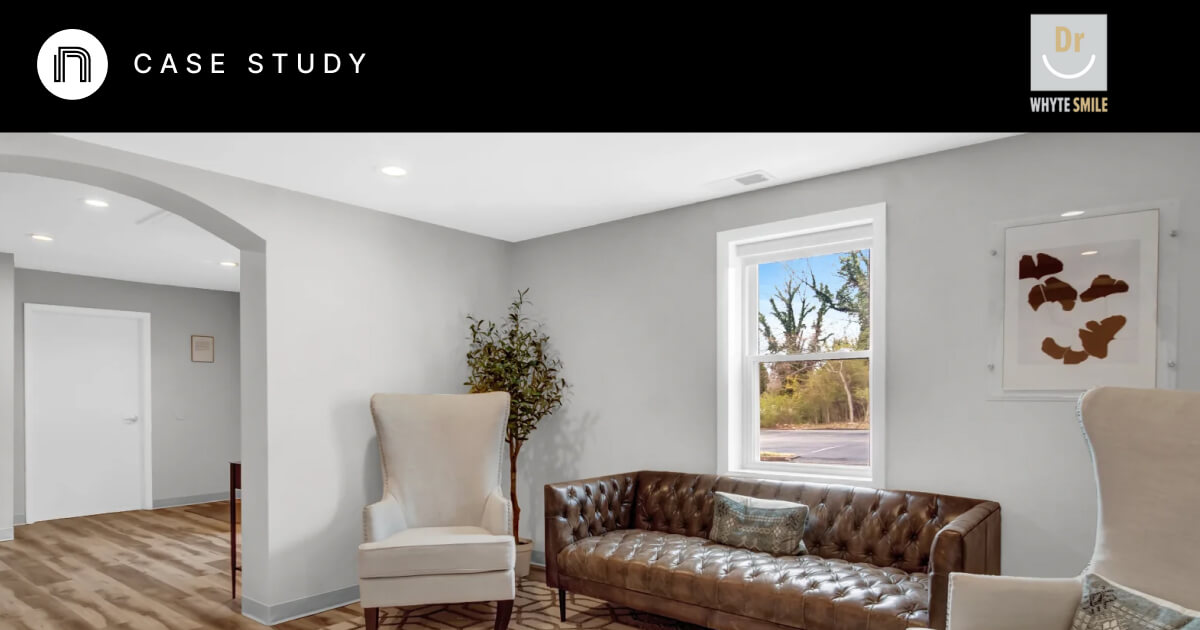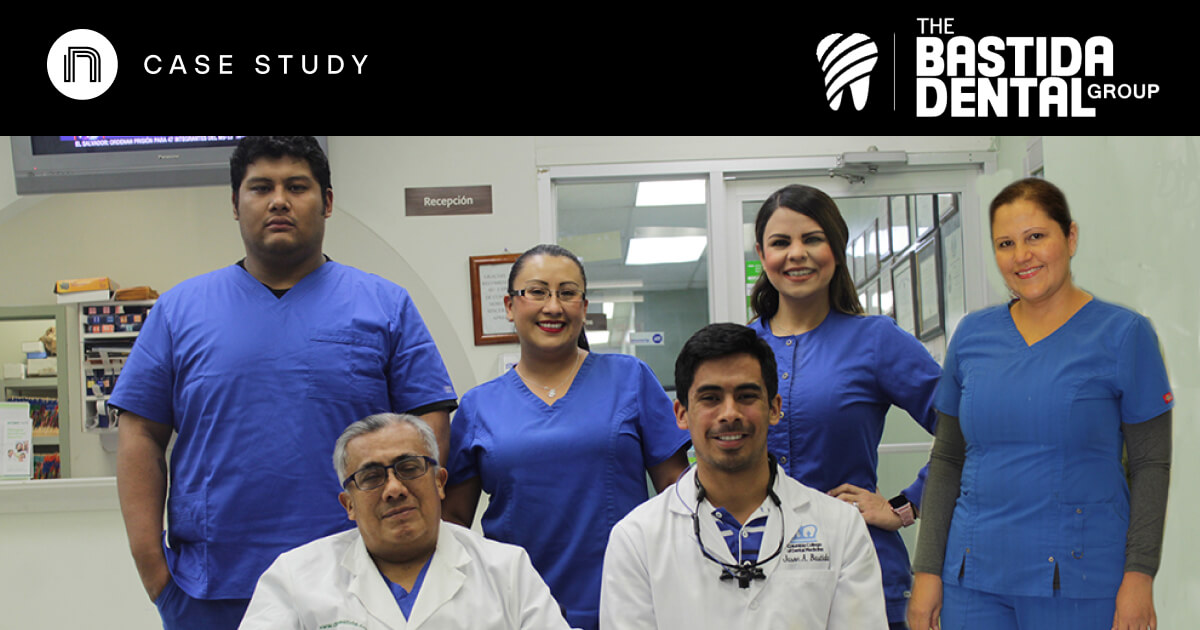
Patient Scheduling: Tactics To Increase Dental Appointments
Discover the reasons behind more practices adopting online dental appointment scheduling software solutions and which one suits your needs. Learn how these tools can drive appointment bookings, minimize no-shows, and reduce cancellations.
Integrating patient scheduling software can save your practice hours of time and money that you are currently losing because of no-shows and cancellations. Since your patients, especially the younger generation, are more comfortable using apps, online shopping services, and virtual communication already, getting them to schedule with you digitally will elevate their experience.
Most patients will search for a dentist online before making their choice. As this will often be outside of office hours, patients will want to book during these times (either before you open or after you close). Offering the ability to book where and when patients are searching for you will significantly increase patient conversions.
Along with introducing you to NexHealth’s solution that will help you acquire new patients and retain your existing ones, here’s what we will be discussing in this article.
- What dental scheduling software is, and why it is important
- 5 benefits of using a dental scheduling software
- 7 common features of dental scheduling software
- 5 best dental scheduling software solutions that convert online patients
- 5 best dental scheduling software solutions for internal patient bookings
- 5 best free dental scheduling software solutions
Let us jump right into learning everything there is to know about dental scheduling software to help you find the best solution for your practice.
What is dental scheduling software and why is it important?
Online dental appointment scheduling is used by practices to schedule patients, manage appointments and communicate directly with patients. It’s how patients can book their appointments on their device, eliminating the need to call your office. Medical and dental practices today are adopting appointment schedulers to their workflow as appointment scheduling tools help your staff efficiently use their time instead of spending their day answering phone calls.
5 benefits of using a dental scheduling software
Practices that use online dental appointment scheduling run more efficiently than the ones that have to spend their time manually scheduling patients and sending reminders. This frees up your staff’s time, allowing them to work on the patient experience and grow your practice. Let us look at some of the benefits of using dental appointment software:
- Book appointments after hours: Practices that used NexHealth’s scheduling software reported that almost 73% of their patients booked their appointments after hours. Since your office hours are the same as your patient’s work schedule, booking their next dental appointment at that time may interfere with their work. More importantly, new patients searching for a new dentist won’t have to wait until your office opens to schedule an appointment, allowing you to convert visitors outside of your office hours.
- Capture more patients directly from Google: With a tool like NexHealth that integrates with Reserve with Google, new patients who find you through Google can directly click a button to book an available slot. On the contrary, using an online directory like Zocdoc won't contribute to growing your practice's SEO presence. Additionally, you'll be required to pay Zocdoc for every new patient appointment booked through its marketplace, regardless of their attendance.
- Eliminates the need to call: Most people procrastinate booking their appointments because they have to call the office, stay on hold, or leave a voicemail, making a routine task like booking an appointment arduous. With scheduling software, patients book their appointments at their convenience. Since patients can see their doctor’s availability, they can simply choose the time that works best for them.
- Saves staff time: Scheduling patients manually takes time and by automating repetitive tasks, you can save administrative staff 15 to 30 minutes per patient. It’s also proven that automated patient reminders reduce no-shows by 22.95%. If patients can book their visits at their convenience, from their preferred device, it frees up the front office staff’s time to focus on preparing for events and opportunities that can help the practice grow. Plus, online dental scheduling software reduces the chance of typos or miscommunication.
- Automated reminders: All dental appointment scheduling software solutions come with the ability to send appointment reminders to your patients to reduce no-shows and cancellations.
How to schedule patient appointments effectively
Your practice thrives on how effective your patient scheduling process is. Whether your staff is feeling overburdened or are missing opportunities, embracing technology to improve your patient scheduling workflow is a great starting point.
1. Allow patient self-scheduling
By empowering your patients with self-scheduling software, you are handing them the option to manage their care at their time, not yours. Since your patients use digital tools to book movie tickets, flights, and hotels, their familiarity to navigate similar technologies allows them to successfully book their visit with your practice.
2. Confirm appointments by text

97% of text messages are opened within 15 minutes of delivery! With such a high success rate, your practice has the golden opportunity to interface with your patients with ease. By offering two-way communication, you can get quick confirmations via text that enables your practice to keep calendars full.
NexHealth offers automated, HIPAA-compliant secure messaging to reach patients more effectively and keep an open line of communication for maximum patient access.
3. Providing an omnichannel experience
Using a digital self-scheduling tool that can be added to your website and social media channels allows your practice to offer an omnichannel experience to your patients, enabling them to book their appointment on the platform of their choice. This builds familiarity and helps maintain the same experience across all platforms.
NexHealth’s online scheduling tool integrates with your practice website, Facebook page, and Google My Business profile so that your patients can book their visit directly.
4. Offering 1-click booking

NexHealth’s 1-click booking feature is designed especially for your existing patients who can reduce the time taken to book an appointment from 15 minutes of waiting on the phone to 1 tap. Your practice can send out an SMS or an email with embedded timeslots with the right appointment type and your current availability. The patients just need to select their preferred time, review their details on a prefilled form, and confirm their appointment. This one-of-a-kind feature is guaranteed to delight your patients as a simple and frictionless way to manage their care.
5. Virtual waitlist
As priorities take over, appointment cancellations are inevitable and can leave gaps in your practice calendar. By sending a message to patients and giving them an option to move up their appointments, you could offer immediate value to patients seeking your services.
With NexHealth’s Waitlist feature, an automatic outreach message is sent to patients to check if they are interested in moving up their appointment, filling appointment openings in minutes. Once the patient confirms, NexHealth notifies your practice and automatically updates your practice management system, keeping your calendar updated with no extra effort.
6. Schedule the next appointment before they leave
As a practice, your front office staff must make sure that your patients don’t leave without booking their next visit, even if it may be several months ahead. This ensures their loyalty, helps you plan your calendar in advance and also lets them know that you are committed to working with them to reach their health goals.
7. Recall

Your email and text outreach efforts can be used to remind patients to schedule their visits. By providing a link to your online scheduler, they can easily book their appointments by looking at your availability. NexHealth’s recall feature sends out automatic reminders to your patients and instantly syncs with your EHR system when a confirmation is received.
Schedule more patients - and fill cancellations and no-shows - with NexHealth!
5 best dental scheduling software solutions that convert online patients
The convenience of letting patients book their appointments is liberating for both your front office and your visitors. Your patients can schedule their visits without facing any judgment or inhibition while your front office staff can work on strategies that can help bring in more patients. Let us look at the best dental appointment software products that offer this functionality:
1. NexHealth
Image Credit: NexHealth
Cost: Contact for quote
Best for: Acquiring new patients, as current users have reported an average of 18 new patients per month
NexHealth is patient scheduling software that allows your practice to acquire new patients and retain your existing patients by giving them a modern patient digital experience. With NexHealth’s online scheduling system your practice can be fully customized to fit your needs. This includes selecting appointment types, durations, providers, locations, and examination rooms. This detailed level of customization frees up your staff time to focus on delivering great quality care and experience.
Top features:
- Online scheduling: Patients can book their appointments without the need to call during office hours or have to go back and forth to get an appointment confirmation.
- Appointment-specific reminders: Practices can set up automatic reminders to go out before their patients’ visits to reduce no-shows and cancellations, customized per each appointment type.
- Email and text marketing: Patients can communicate directly with the front office via sms or email messaging in case they have any questions about their appointment or their care.
- Virtual waitlist: Automatically notify patients on the waitlist when an appointment opens up to fill appointments in as little as 3 minutes. Patients can directly book from a button click and bookings will automatically sync with your practice management system.
- Online forms: Patients fill out forms digitally from home. The information syncs directly into the family file of the EHR.
- Online surveys & reviews management: Sending customizable feedback forms after appointments can help your practice understand your patients’ satisfaction levels, giving you a chance to review and improve based on their responses.
- Patient recalls: Practices can send targeted and personalized patient recall campaigns to bring back patients to resume their care with you.
- Online payments: Instead of having your patients queue up in the office to make their payments, scheduling software solutions allows secure online payments thought a link click that patients can use from the comfort of their homes on their own devices.
2. Denticon
Image Credit: Denticon
Cost: Contact for quote
Best for: Actionable insights and analytics that can help boost practice performance
Delivering a modern clinical experience, Planet DDS’ Denticon practice management solution is a cloud-based dental software for practices of all sizes. Denticon helps reduce your IT costs by replacing costly legacy systems with a predictable monthly subscription rate.
Top features:
- Online appointment scheduling
- Native patient communication
- Centralized patient data
- Multi-location functionalities
3. Maxident

Image Credit: Maxident
Cost: Contact for quote
Best for: Free data conversion
Maxident ‘s practice management software allows dental offices to efficiently manage their practice with all the right dentistry software tools. On purchasing the Maxident software for your practice, you also get the software license for free to run it on as many computers as you like.
Top features:
- Patient recall and appointment system
- Treatment planning
- Insurance approval
- Audit trails
4. Flexbooker

Image Credit: Flexbooker
Cost: $39 - $79/month
Best for: Try it for free for 14 days
FlexBooker is an online scheduling tool that can allow customers to book their appointment from any device and receive confirmations automatically. By adding a plugin widget to their site, businesses can customize the design and experience that they want their clients to look for.
Top features:
- Online payments
- Daily recap every morning to see all bookings and cancellations
- Automatic reminders
- Google Calendar, Microsoft 365, Outlook, and iCal integration
5. LocalMed

Image Credit: LocalMed
Best feature: LocalMed syncs with all major practice management systems
LocalMed is a marketplace connecting dental professionals with patients who are looking for their services. Patients can browse and compare through all the available providers in their city and conveniently schedule an appointment that syncs with their preferred digital calendar.
5 best dental scheduling software for internal patient bookings
If you are looking for scheduling software that can help your front office manage patient bookings, then check out the following solutions to help you achieve this for your practice:
1. SimplePractice

Image Credit: Simple Practice
Cost: $39 - $59/month
Best for: Try for free for 30 days without giving any credit card information
SimplePractice’s HIPAA-compliant practice management software allows practices to go fully virtual and access their data from anywhere. Practices can build their website and integrate it with their EHR system, personalize their design within minutes, and also make their platform mobile-friendly.
Top features:
- Telehealth
- Online booking
- Paperless intakes
- Insurance
2. MOGO

Image Credit: MOGO
Cost: $250/month
Best for: Send MOGO your data for a no-obligation data evaluation to receive what data will be converted to the MOGO Cloud
MOGO is a comprehensive cloud-based dental practice management solution that caters to the needs of general dentists as well as specialists. Securing your data against any potential cyber threats, MOGO integrates with Microsoft Azure, making it one of the most powerful and HIPAA-complaint softwares on the market.
Top features:
- Schedule appointments
- 24/7 all-inclusive access to patient records, admin reports from multiple locations
- eReminders
3. Apptoto

Image Credit: Apptoto
Cost: $29 - $249/month
Best for: Integrates with your existing systems, if your system is not listed, Apptoto can build an integration for you
Apptoto is an online scheduling software that can be used by any client-facing business that promises to eliminate no-shows and late arrivals. You can send fully customizable and interactive appointment reminders, and confirmation requests through text, email, or voice call for your upcoming appointments, which are updated in real-time to your calendar and inbox.
Top features:
- Reminders
- Scheduling
- Online payments
- Two-way messaging
4. Cliniconex
Image Credit: Cliniconex
Cost: Contact for quote
Best for: Patient engagement
Cliniconex’s patient engagement solution is built to ensure that your clinic’s workflow and processes are never compromised. Their solution for medical clinics includes sending reminders and notifications, conducting surveys, and offering a waiting room concierge for their senior care automatic care reminders.
Top features:
- Appointment reminders
- Booking notifications
- Waitlist management
- Appointment recalls
- Clinic cancellations
- Patient surveys
5. PatientPop

Image Credit: PatientPop
Cost: Contact for quote
Best for: Get a free assessment of your practice’s online marketing, visibility, and website performance
PatientPop provides your patients access to digital touchpoints at every step of their care. Along with automating your front office to give your patients a modern clinic experience, PatientPop takes care of your online reputation, local listings, and presence on the internet.
Top features:
- Online scheduling
- Two-way text messaging
- Reminders and appointment confirmations
- Patient satisfaction surveys
- Telehealth
5 best free dental scheduling software solutions
If you are still on the edge about integrating scheduling software into your practice or if budget is a constraint, then there are a few free tools listed below that can help you get started. All of these tools have a free plan which offers limited functionality, allowing you to upgrade to unlock more features.
1. ZocDoc

Image Credit: ZocDoc
Cost: Free to sign up but you will pay per patient fees up to $100+ per new patient visit
Best feature: Practices can fill last-minute openings in their schedule
ZocDoc is an online marketplace for medical and dental professionals to list their practice. Patients can browse and compare healthcare providers based on their insurance coverage, reviews by other users, and their earliest availability.
2. appointy

Image Credit: appointy
Cost: Free - $79.99/month
Best for: Get bookings directly from Facebook, Instagram, Google, and your business website
Appointy’s web-based online scheduling tool is designed to eliminate back and forth phone calls and emails, thereby boosting productivity and growing your business. Appointy can be used by professionals, local service providers, and mid to large enterprises across industries to manage their calendars and ensure their schedules are full.
Top features:
- Google bookings
- Online payments
- Automatic reminders
- Live chat and email support
3. SimplyBook.me

Image Credit: SimplyBook.me
Cost: Free - $59.99/month
Best for: Book appointments via Facebook, Instagram, Google Maps, client app, Booking Page, and a widget on your website
SimplyBook.me functions as an online booking system for all service-based businesses with the availability of a customized client and an admin app. SimplyBook.me offers other customization options such as a domain name, a drag-and-drop email editor, themes, translation, and calendar layout.
Top features:
- Online bookings
- Reminders to clients and staff
- Online payments
- Coupons & gift cards
4. mend

Image Credit: mend
Cost: Free - $29/month
Best for: AI-powered no-show and cancellation prediction
Mend is a complete unified front-end telehealth solution that works with artificial intelligence and machine learning algorithms to predict no-shows and cancellations with 90% accuracy. Mend seamlessly integrates with all major EHR and PMS systems and has advanced API coverage if needed.
Top features:
- Telehealth
- Patient scheduling
- Digital forms
- Integration with your existing EHR system
5. 10to8

Image Credit: 10to8
Cost: Free - $40/month
Best for: Connects to 500+ apps
10to8 is a secure and encrypted HIPAA-compliant scheduling software that is built on open-source frameworks empowering you to have additional control over your patient data and how you share it. You will have to sign a Business Associate Agreement or a BAA before storing PHI within 10to8.
Top features:
- Reminders
- Online booking
- Staff coordination
- Calendar sync
Increase patient bookings with NexHealth
As a practice, if you want to offer your patients modern treatment methods and be known for keeping yourself up-to-date with the latest in the field, then providing a modern patient experience is an important aspect of it.
NexHealth is more than a scheduling software: it offers advanced tools to maximize booked capacity and reduce no-shows. It’s designed to elevate your entire patient journey, from booking new patients and completing forms, to payments and recalls when it’s time to come back.
Learn how you can revamp your practice with NexHealth’s by booking your free demo today.

_BestEstimatedROI_Roi.png)
_BestSupport_QualityOfSupport.png)















.png)



.svg.png)




And I've used at least 6 others." - Shaye, Falmouth Dentistry